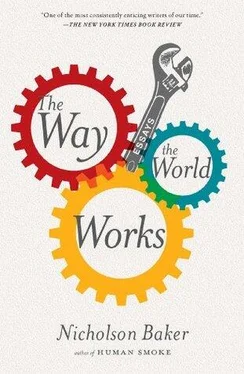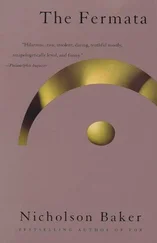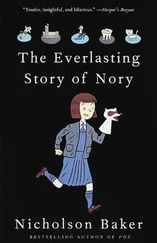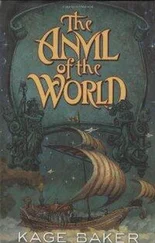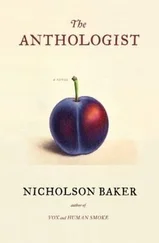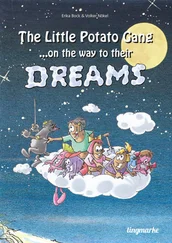Nicholson Baker - The Way the World Works
Здесь есть возможность читать онлайн «Nicholson Baker - The Way the World Works» весь текст электронной книги совершенно бесплатно (целиком полную версию без сокращений). В некоторых случаях можно слушать аудио, скачать через торрент в формате fb2 и присутствует краткое содержание. Год выпуска: 2012, Издательство: Simon & Schuster, Жанр: Публицистика, Критика, на английском языке. Описание произведения, (предисловие) а так же отзывы посетителей доступны на портале библиотеки ЛибКат.
- Название:The Way the World Works
- Автор:
- Издательство:Simon & Schuster
- Жанр:
- Год:2012
- ISBN:нет данных
- Рейтинг книги:4 / 5. Голосов: 1
-
Избранное:Добавить в избранное
- Отзывы:
-
Ваша оценка:
- 80
- 1
- 2
- 3
- 4
- 5
The Way the World Works: краткое содержание, описание и аннотация
Предлагаем к чтению аннотацию, описание, краткое содержание или предисловие (зависит от того, что написал сам автор книги «The Way the World Works»). Если вы не нашли необходимую информацию о книге — напишите в комментариях, мы постараемся отыскать её.
), here assembles his best short pieces from the last fifteen years.
The Way the World Works
OED
Modern Warfare 2
Through all these pieces, many written for
, and
, Baker shines the light of an inexpugnable curiosity.
is a keen-minded, generous-spirited compendium by a modern American master.
The Way the World Works — читать онлайн бесплатно полную книгу (весь текст) целиком
Ниже представлен текст книги, разбитый по страницам. Система сохранения места последней прочитанной страницы, позволяет с удобством читать онлайн бесплатно книгу «The Way the World Works», без необходимости каждый раз заново искать на чём Вы остановились. Поставьте закладку, и сможете в любой момент перейти на страницу, на которой закончили чтение.
Интервал:
Закладка:
I drove up to Jay on a fine day in mid-October, thinking as I drove about forests with logging trails, and about 400,000-square-foot Internet data centers going up around the country with cooling towers and 28,000-gallon backup tanks of diesel fuel, and about mountaintop coal removal, and about relative carbon footprints. I’d been talking on the phone to Don Carli, a research fellow at the Institute for Sustainable Communication. Carli said that the risk to Maine’s forests — and to forests in Washington and Wisconsin and elsewhere — was not from logging, but from what happens if the logging stops. A thinned or even a completely felled woodland grows back, but when a landowner loses his income from cutting down trees, he has to find another way to make money. Low-density development, with all of its irrevocabilities — paved roads, parking lots, power lines, propane depots, sewage plants, and mini-malls — is one way of getting a return. “Hamburgers and condos kill more trees than printed objects ever will,” Carli told me. “If the marketplace for timber, harvested sustainably from Maine’s forests, collapses because of the propagation of a myth — which some might say is a fraud — that says that using the newspaper is killing trees, then what happens is the landholder can no longer generate the revenue to pay a master logger for sustainable timber harvesting, and can’t pay the taxes. Then a developer offers to buy the land at a steep premium over what it was worth as a forest, and the developer clear cuts the land and turns it into a low-density development. Then it really is deforested.”
I drove through Auburn and Turner, north on Route 4, past many FOR-LEASE signs, past the Softie Delight (closed), past the White Fawn Trading Post, which once sold deerskin gloves (closed), past the Antique Snowmobile Museum (open) and the apple-processing factory (closed) and Moose Creek log cabin homes (open). The road curves as you come into Jay, and you drive along the railroad track toward the Otis Mill. The tower is made of brick and, oddly, looks a little like the Campanile in Venice. It still says, at the top: INTERNATIONAL PAPER CO. / 1906.
At a little variety and pizza shop I bought a Coke and three newspapers. The headline on one of the papers, the Franklin Journal, was WAUSAU MILL SOLD, CLOSING. The Lewiston Sun Journal had a big front-page article: OTIS MILL SOLD. A couple from Jay, owners of Howie’s Welding & Fabrication, had bought the mill from Wausau, with financing from a consortium of local towns. They were just figuring out what to do with it, according to the Sun Journal. They wanted to save the building and get some people back to work. As for the machinery, “We’ll be doing a lot of liquidating.”
I drove through Otis’s plant gate and into one of the parking spaces near the railroad tracks. When I got out, a man was standing near a shiny red pickup truck. I told him I was writing about the paper industry for a newspaper in San Francisco and he said I should talk to Larry, because Larry had been there over thirty years. He himself had only been there for ten, he said. He asked me inside.
We walked into a low white room with blue trim. Fabric banners announcing yearly corporate safety awards hung from the ceiling. So did the American flag. There were several corkboards for union announcements, but the announcements had all been taken down and the colored pushpins neatly clustered in the cork. There was a bench strewn with flyers for employment retraining and adult-education flyers — also brochures from church groups, job-loss support groups, and workshops on starting a new business. Something from the United Way said: “YOU CAN SURVIVE UNEMPLOYMENT!”
Larry, a man in his sixties, gestured me upstairs to the darkened, unkempt office suite. Larry’s own office was still well organized, though. It was officially his last day as an employee of Wausau — October 15, 2009. He’d worked at the plant for thirty-three years, first in maintenance and then in engineering. Schematics and electrical diagrams of the mill that he knew better than almost anyone else were neatly ranked in a file caddy, and pictures of his grandchildren were angled on the bookcase behind him. “When I first started here,” he said, “they were making copier-type paper. Then those markets grew so big that we couldn’t compete with bigger mills. We started getting into specialty grades, like release base paper — the paper that you throw away behind a self-sticking stamp or a bumper sticker. We did a lot of that. We did some inkjet early in the inkjet era. Again we got competed out of that. Our niche was specialty grades, small orders.”
Larry didn’t smile much, except when he talked about taking care of his grandchildren. Everyone knew everyone in the plant, he said, and the closing of the second paper machine came as a shock to the town. “It’s not good news, for sure,” Larry said. “The expectation was that we had a few years left to run the one machine.”
Could the plant be brought back online by another owner, I asked, if paper markets picked up? No, said Larry: Wausau had sold the plant to the proprieters of Howie’s Welding & Fabrication under the condition that its machines never again be used to make paper in North or South America. “It was sold with a non-compete clause,” he explained. Wausau had not only closed the plant down, it had effectively ended any possibility of its resurrection as a paper mill.
As he was shaking my hand, Larry told me I should get in touch with Sherry Judd, who was in charge of Maine’s Paper & Heritage Museum.
I got in the car, sighed, and drove on down the road, trying to figure out where to go next. Passing the Otis Federal Credit Union, I saw an electric sign, which said: “Benefit Spaghetti Supper for PAPER & HERITAGE MUSEUM Saturday October 17th 4:30 to 7PM St. Rose Parish Hall Jay.” I stopped and took a picture of the sign. Then I drove a few miles upriver to the big Verso Paper mill—“Andro,” as the locals call it — where they make the paper for Cosmo and Martha Stewart Living. More than nine hundred employees work there. I parked near a vintage green Jaguar in the parking lot.
I stood for a while, looking at the sun as it sank behind the two digester towers, with their manelike plumes of steam. Not smoke — steam. The plant was enormous and boxy and clean and, I thought, elegant in its own way. It was heavy industry, but it carried its weight well. There was no sulphurous paper-mill stench. I felt a surge of pride that the paper for many magazines — filled with photographs of food and jungles and expensive New York City interiors and classy brassieres — was being made right here, in Jay, Maine. The biggest building said VERSO in big letters on the side.
We may not make steel anymore, in our hollowed-out husk of a country, I thought, and we may not make shoes or socks or shirts or china or TVs or telephones or much of anything else except pills and pilotless drones — but we do make very heavy, twenty-four-foot rolls of clean-smelling, smooth-surfaced paper.
I took some pictures of trucks filled with cut logs queued up in one of the feeder roads. Then I went to the security desk and announced myself and drove home. A few days later I got a call from Sondra Dowdell, one of Verso’s corporate spokespersons. She explained how efficient the Verso plant was — that it used river power, tree bark, and “black liquor,” the lignin-rich waste product of papermaking, as sources of energy. She forwarded me Verso’s sustainability report, “A Climate of Change.” A chart diagrammed the sources of Verso’s energy: more than 50 percent came from recycled biomass — i.e., bark and black liquor — another 1.2 percent came from hydroelectric power. Dowdell had visited one of Verso’s customers, Quad/Graphics, in Wisconsin, which prints many magazine titles. “It is amazing,” she said, “the talent of the graphic artists and the technical savvy of the people who can lay lovely ink on paper. It is just beautiful to watch.”
Читать дальшеИнтервал:
Закладка:
Похожие книги на «The Way the World Works»
Представляем Вашему вниманию похожие книги на «The Way the World Works» списком для выбора. Мы отобрали схожую по названию и смыслу литературу в надежде предоставить читателям больше вариантов отыскать новые, интересные, ещё непрочитанные произведения.
Обсуждение, отзывы о книге «The Way the World Works» и просто собственные мнения читателей. Оставьте ваши комментарии, напишите, что Вы думаете о произведении, его смысле или главных героях. Укажите что конкретно понравилось, а что нет, и почему Вы так считаете.
